Catastrophe modeling firm AIR Worldwide estimates that insured losses from Windstorm Christian (known as St. Jude in the UK) will range between EUR 1.5 billion and EUR 2.3 billion ($2.0 billion and $3.1 billion), with the majority of insured losses occurring in Denmark and Germany.
According to AIR, Significant insured losses also occurred in the Netherlands, France, UK, and Sweden.
AIR’s loss estimates include: insured physical damage to property (residential, commercial, industrial, agricultural, auto), both structures and their contents; losses to insured forestry in Norway, Sweden, and Finland.
They do not, however, include: business interruption and additional living expenses for residential claims, for all modeled countries except the UK; losses to uninsured properties; losses to infrastructure; losses from non-modeled perils, including coastal surge and inland flooding; demand surge.
Windstorm Christian had some similarities to a very powerful storm in October of 1987, which devastated the southeast coast of the UK. Although some of the recorded wind speeds of Christian were very high, the storm never reached the widespread strength of the 1987 storm.
Christian’s track also resembles those of other significant historical storms, including:
- 1990’s Daria, which was Europe’s most damaging storm in recent history.
- 1999’s Anatol, which was Denmark’s largest loss-causing event in recent history
- 2005’s Erwin.
Like Christian, these storms also affected a large number of other European countries, including France, the Netherlands, Belgium, Germany, Sweden, and the Baltic countries.
In a statement announcing AIR’s estimates, Gerhard Zuba, senior principal scientist at AIR Worldwide, noted that while Christian produced record-setting wind speeds at several meteorological stations, total wind damage was less severe than that from the previous historical storms—a result of Christian’s smaller wind footprint and its passage over areas with fewer exposures.
Residential and commercial structures across the affected area experienced relatively minor wind damage, and structural damage to well-constructed buildings was limited. Nonstructural damage was observed to roofs, cladding, and other external building components, and wind-borne debris caused damage to windows.
Heavier damage occurred from trees (many of which still had leaves on them) falling on buildings, cars, and power lines.
In the UK, many claims resulted from power outages that destroyed food in freezers.
According to Zuba, October is usually a quiet month for windstorms in Europe. “Nevertheless, the overall atmospheric conditions were favorable for storms to impact the UK and northern Europe.”
Noting that trees still have leaves on their branches, Zuba said that damage from storms during this time of year can be more severe than storms that develop later—with branches more likely to break off and become airborne missiles, and trees more likely to topple.
An AIR damage survey team visited parts of northern Germany that were affected by the storm. Their preliminary findings indicate widespread tree damage, which caused severe damage to some homes and vehicles.
The team observed generally minor wind damage to the roof tiles of residential and commercial buildings.
Significant damage occurred to agricultural buildings, which typically exhibit higher vulnerability than residential and commercial structures, and to light metal structures.
While the size of individual claims is expected to be relatively low, the overall volume of claims is expected to be significant due to the size of the affected area. AIR expects that industry insured loss in Denmark will be highest, followed by Germany, the Netherlands, France, and the UK.
In the AIR statement, Zuba also described the track of Christian and other effect noting that after smashing into southern Britain on Monday, Oct. 28, knocking down trees and flooding lowlands, it also disrupted land, sea, and air travel.
“Gusts of 160 km/h (100 mph) were reported on the Isle of Wight in southern England, and waves greater than 7.5 meters (25 feet) were reported elsewhere along the coast,” Zuba reported.
According to AIR, after striking the UK, the storm moved north and east, hitting France, the Netherlands, northern Germany, Denmark, Sweden, and Russia with similar force, and across the Baltic Sea to Latvia and Estonia, where the storm weakened. The Ile d’Ouessant, Finistere, France, reported a gust of 133 km/h (83 mph); the Netherlands gusts of 90 to 130 km/h (56 to 81 mph) along the Ijsselmeer coast; and southern Denmark the strongest wind recorded in the country’s history—a gust of 194.4 km/h (120.8 mph).
By Tuesday morning, Windstorm Christian had dissipated considerably as it moved to Sweden’s east coast and out toward the Baltic Sea, although hurricane-force gusts of over 115 km/h were measured on the Baltic islands of Oland and Gotland.
Source: AIR Worldwide





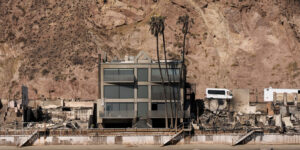


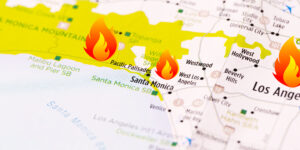
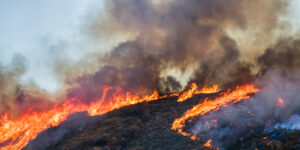





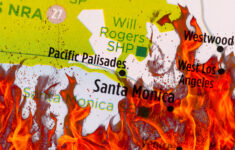





 Why All the Fuss? Fairness Regulations Meet Insurers’ Growing Use of AI
Why All the Fuss? Fairness Regulations Meet Insurers’ Growing Use of AI  Business Groups, Trial Lawyers at Odds Over Georgia’s Latest Push to Curb Lawsuits
Business Groups, Trial Lawyers at Odds Over Georgia’s Latest Push to Curb Lawsuits  Study Shows Some Buildings Along Miami Coastline Are Sinking
Study Shows Some Buildings Along Miami Coastline Are Sinking 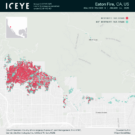 Too High? Too Low? BMS Analyzes Early Wildfire Insured Loss Estimates
Too High? Too Low? BMS Analyzes Early Wildfire Insured Loss Estimates 




